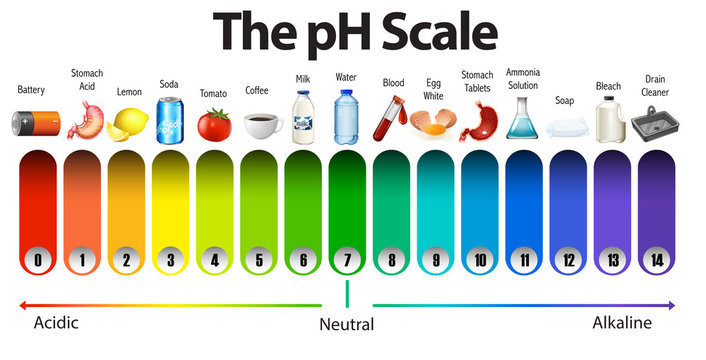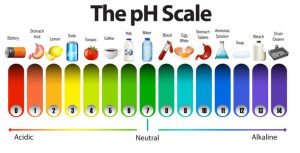Acid is the most important thing in wine. Period.
You may notice that our wines have more brightness on the palate than other wines in the area. Some Northeast Pennsylvania winemakers will dump copious amounts of cane sugar (sucrose) into their wine in an attempt to mask the tartness that acid brings. Unfortunately, this method masks so many flavors of the actual wine, distorts the mouthfeel, and raises your blood sugar. As with most things in life, acid is about balance. But let’s back it up a bit. What role does acid actually play in wine making?
Acid is measured using the pH (potential of hydrogen) scale. The scale ranges from 0 to 14 with 0 being most acidic, 14 being most alkaline, and 7 being pure water. You will find the majority of wines will land somewhere in the 3 to 4 range, with white wines more towards 3 and reds more towards 4. This is a general range and not to say that wine outside this range is bad. It is ideal to have your wines inside this range because of bacteria. The less acidic your wine, the easier it is for bacteria and microbial life to form and ruin your wine. That being said, you don’t want to be too acidic either as your yeast may struggle to live and do their job of splitting sugar into carbon dioxide and alcohol.

In summary, acid acts as a natural preservative and allows wine to last longer. But acid is more than that in wine. It’s flavor. I’ve brought in some friends who are more qualified and can help articulate those thoughts better than myself. My friend and professional sommelier, Michel Emerick, puts it like this:
“If you ever found yourself reaching for a glass of lemonade on a hot summer’s day, you certainly experienced the refreshing balance that acidity can bring to your palate. That balance is what makes a glass of wine so enjoyable, be it with food, with friends, or by itself. By understanding the importance of that mouthwatering tartness wine can give, you can be certain that every glass will be a journey of discovery and pleasure.
Just as in a perfectly balanced lemonade, too much acid and not enough sugar can taste sour and puckery. Conversely, too much sugar and not enough acid can taste sweet and syrupy. The perfect balance between sugar and acid is therefore as important as the fruit flavors the wine can give.
Bottom line is, acid brings balance to wine, some needing more and some needing less based on sugar content, but it is certainly something worth paying attention to as you explore different grapes, regions, vintages, and producers.”
Acid is vital for your enjoyment and your palate. To make this even more relatable, I asked my friend and owner of Rivertown Taps, Chef Lewis Leiterman, to explain the importance of acid in food:
“So for me, believe it or not… acid (proper pH) in my food is more important to me than salt. Acid plays a key role in what people refer to as ‘balance’ in food. Acid makes food sing. Salt being the most important ingredient in cooking is a misconception. As Alton Brown said, ‘salt makes food taste more like itself’. In the case of mom’s meatloaf surprise…we all know that’s not always a good thing…too much fat, too much salt, too much sugar, or too much acid for that matter, can make anything inedible.
However, when making a dish, acid seems to always be the forgotten piece to the puzzle. We all know to add delicious fats to food. Olive oil, butter, or my favorite…duck fat. We all season with salt. We know how to add various sugars to food (honey, maple, agave, molasses, sugar cane). But can you recall the last time you finished that short rib sauce with just a slight touch of sherry vinegar? Or threw just a small splash of lemon into your hot honey? Or my personal favorite…some finely minced pickled sushi ginger and hot honey.
The fact of the matter is, acid is king. It makes things bright and fresh and cleans excess fat off your tongue so you can taste all the other delicious flavors in those dishes or wines… ;)”
I think by now you get the point of how important acid is… But don’t take my word for it, experience it for yourself. Try Lewis’s tips next time you cook, or listen to Michel’s advice as you explore new wines. I myself will urge you to try Hakuna Catawba to see how harmonious the balance of sugar and acid can really be.




